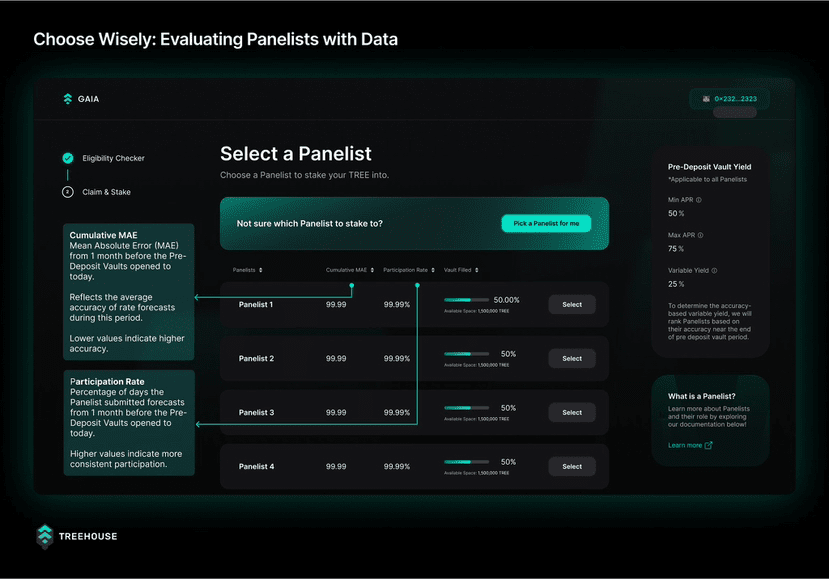Have you ever bought bonds? That kind of investment where you receive fixed interest regularly, like collecting eggs? But in the DeFi world, different protocols offer different interest rates, like using coupons at different stores, you never know which discount is the best.
At this point, Treehouse acts like a reliable 'DeFi financial advisor': it helps you unify interest rates and stabilize returns, preventing your digital assets from fluctuating wildly like a stock market crash. It's like putting a 'fixed income seatbelt' on DeFi.
Who is Treehouse? It provides the bond infrastructure for the DeFi world.
Treehouse is a pioneer in building fixed-income products in DeFi, with two major 'killer features':
tAssets (like tETH): When you deposit ETH or LST (Liquid Staking Token, like stETH), the protocol gives you tETH, which automatically runs around to help you arbitrage and earn more returns. It's like tying your ETH to a speed-running robot, so you don't miss any arbitrage opportunities.
DOR (Decentralized Offered Rates): It can be considered the on-chain crypto version of 'LIBOR', forming a standard interest rate through community consensus, such as TESR (Treehouse Ethereum Staking Rate), providing a trustworthy and transparent 'reference interest rate curve' for everyone.
In short, Treehouse is a 'financial skyscraper' in DeFi: tAssets are financial products, DOR is the interest rate benchmark, allowing you to both invest and understand why the returns are what they are.
tETH is like putting 'arbitrage boots' on ETH.
You just deposited ETH into Treehouse and received tETH as an asset. Don't underestimate it— it not only retains staking rewards but also automatically arbitrages between DeFi interest rate spreads, such as where collateral rates are high and where DeFi lending is active, it goes there to bring you additional earnings. As a result, the returns are more appealing than simple staking.
Moreover, you can also use tETH to continue experimenting in other protocols, keeping your assets 'active,' it's like having a multi-purpose robot to manage your money.
DOR: Making interest rates less about luck, and more visible like a bank.
In traditional finance, you have SOFR, LIBOR, and Treasury yield curves as benchmark interest rates. Where does DeFi go wrong? Everyone relies on their feelings for interest rates, each doing their own thing.
DOR essentially uses the node consensus mechanism of tAssets, deriving a reliable interest rate through on-chain democratic voting, like having everyone draw the interest rate curve together, letting you know 'what the benchmark return for ETH staking is right now.' This not only improves transparency but also facilitates the launch of various structured financial products, such as on-chain FRAs (Forward Rate Agreements).
Data crush: Users, TVL, and partners are all solid.
Treehouse is not just small potatoes:
TVL exceeds $550M, with tETH alone surpassing $450M, and close to 50,000 users, indicating a surge in actual application volume.
In terms of security, it has passed audits from several firms like Trail of Bits and Sigma Prime, and has an insurance pool, making it as stable as a bank backup.
Its token TREE was launched on July 30, 2025, supporting governance, staking, and payments, and is traded on multiple major exchanges. The current price is about $0.35–$0.37, with a market cap of around $55M, and a circulating supply of about 18% of the total.
To put it metaphorically: Treehouse is like a combination of a 'bank + central bank' in DeFi.
tETH = Financial product: You provide certain assets, and it uses them to earn returns, like deposits + an app that automatically rebalances.
DOR = Interest rate tool: No longer relying on 'feelings provided by people,' but rather on on-chain voting results, making interest rates verifiable.
TREE = Bank shares and ATM card: You can vote on where the money is invested and also use it for staking or paying fees.
Advantages vs. Risks: Both need to be acknowledged.
Advantages:
Provides stable fixed income options, filling a big gap in DeFi.
The automatic arbitrage mechanism of tAssets saves you from manually moving bricks.
DOR enhances market transparency and standardizes interest rate references.
Safety audits, insurance, and other measures are relatively comprehensive.
A lot of tokens, high TVL, and strong institutional backing.
Risks:
The automatic arbitrage logic of tAssets is complex, and the risk of development vulnerabilities still exists.
DOR falls under the category of interest rate products, involving macroeconomic and regulatory compliance that is not clearly defined.
Down-to-earth conclusion: Treehouse might be your 'safe harbor' for DeFi finance.
Treehouse acts like an add-on for DeFi that introduces a 'fixed income model' and 'interest rate reference framework.' When you want to earn stable returns without being misled by market interest rates, it becomes your 'stable income talisman.'
If you're still struggling with where to stake, or want to give your crypto assets a 'financial boost,' you might want to try Treehouse. Remember, returns should be attractive, data must be transparent, and security should be reliable—this investment decision just needs one last trustworthy Treehouse.
